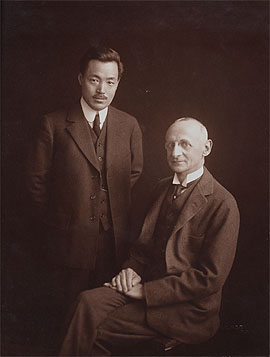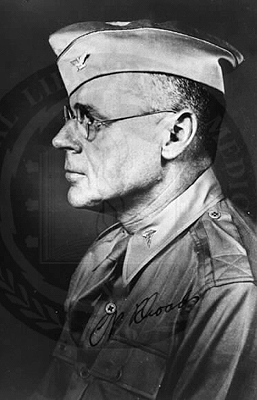![Creative Commons License]()
This work is licensed under a Creative Commons Attribution-Noncommercial-No Derivative Works 3.0 Unported License.
In Part I, I asserted that former United States President William Jefferson Blythe Clinton is in the midst of a grand scheme to snatch billions of dollars from the African continent, and that his scheme is based on a charade. This charade, though, has some substance to it. This is not all smoke and mirrors. If it were, it would have been exposed at its inception. Nonetheless, the ruse is still alive because the authentic elements of this Long Con are so compelling that one is hard pressed to dismiss them. There really are many, many persons suffering from infectious diseases. These con men and women have established such credibility and goodwill (in recent years), it’s hard to imagine their association with something so inhuman…and yet, here we are.
There is an intergenerational component to this work. And it is of such significance that there needs to be some discussion of this “back story.”
In what can only be described as a coincidence, the wisest business man that John D. Rockefeller ever knew was his advisor, Frederick T. Gates. The New York Times once referred to Gates as “The Man Who Thinks for Rockefeller.” I’ve not been able to divine a relationship between the world’s greatest financial advisor of the 19th century and the wealthiest man of the 21st century. It seems that Frederick’s legacy includes the creation of the Rockefeller Institute, the Rockefeller Foundation and the University of Chicago. He was a minister with a penchant for doing “good things.” Of course, most of this goodwill toward man evolved at at time when the inconquerable John D. needed some public relations help. The nation had grown tired of his name, face, wealth and tactics. It was precisely the work of men like Gates that allowed Rockefeller to leverage the power of the press on his behalf.
The medical work of the Institute, under the leadership of Jewish immigrant and Kentuckian Simon Flexner, was intimately concerned with diseases. In fact, Flexner established himself as a leading pathologist, conducted experiments on behalf of the US government in the Philippines and lived till the ripe old age of 83. Flexner, pictured below with Hideo Noguchi, led the Rockefeller Institute until 1935. (Noguchi , in or about 1912 was charged by several prominent New Yorkers with injected 146 persons (many of them children) with syphilis. The case was settled out of court. Given the Rockefeller’s ownership of the entire nation, it’s unlikely that any other result was have occurred. The New York Times, as is their habit, came down on the side of the Rockefeller Institute and it’s beleaguered Japanese scholar. Noguchi died in Ghana working on a cure for Yellow Fever. Japanese Prime Minister Junichiro Koizumi has established the Hideo Noguchi Memorial Award for scientists making contributions to medicine in Africa. )

Simon Flexner was born to a large family. He was not the only Flexner child with an interest in medicine, nor was he the only one to have a significant career. In fact, his brother Abraham Flexner studied at The Johns Hopkins University, Harvard University and Berlin. With the assistance of Newark-based retailer Louis Bamberger, Abraham Flexner would direct the Institute for Advanced Study. Bamberger seeded the Institute with $5 million in 1930. The Institute, initially housed at Princeton University, would serve as a home for scientific research (including bio-chemical research on infectious diseases). Flexner and Bamberger established a safe haven for Jewish scientists who were being summarily removed from critical positions in Europe. Albert Einstein worked there. J. Robert Oppenheimer worked there.
Abraham Flexner also wrote The Flexner Report. The full title of the report is “Medical Education in the United States and Canada: A Report to the Carnegie Foundation for the Advancement of Teaching. This report in 1910, according to historians, became an influential guide in the reform of medical school education. It’s worth reading. There’s even a section called “The Medical Education of the Negro.” In that section, Abraham Flexner wrote:
“The medical care of the negro race will never be wholly left to negro physicians. Nevertheless, if the negro can be brought to feel a sharp responsibility for the physical integrity of his people, the outlook for their mental and moral improvement will be distinctly brightened. The practice of the negro doctor will be limited to his own race, which in its turn will be cared for better by good negro physicians than by poor white ones. But the physical well-being of the negro is not only of moment to the negro himself. Ten million of them live in close contact with sixty million whites. Not only does the negro himself suffer from hookworm and tuberculosis; he communicates them to his white neighbors, precisely as the ignorant and unfortunate white contaminates him. Self-protection not less than humanity offers weighty counsel in this matter; self-interest seconds philanthropy. The negro must be educated not only for his sake, but for ours. He is, as far as [the] human eye can see, a permanent factor in the nation. He has his rights and due and value as an individual; but he has, besides, the tremendous importance that belongs to a potential source of infection and contagion.”
He continues:
“Of the seven medical schools for negroes in the United States (Howard University, Flint Medical College – New Orleans, Leonard Medical School – Raleigh, NC; Knoxville Medical College; Medical Department of the University of West Tennessee – Memphis; Meharry Medical College – Nashville; National Medical College – Louisville), five are at this moment in no position to make any contribution of value to the solution of the problem above pointed out…They are wasting small sums annually and sending out undisciplined men, whose lack of real training is covered up by the imposing M.D. degree.
Meharry at Nashville and Howard at Washington are worth developing, and until considerably increased benefactions are available, effort will wisely concentrate upon them…The upbuilding of Howard and Meharry will profit the nation much more than the inadequate maintenance of a larger number of schools.”
The ties that bind William Jefferson Clinton and Bill Gates to John D. Rockefeller do not extend merely to the realms of politics and finance. In fact, there are more direct connections inside the science lab – and given the history of the scientists associated most closely with Rockefeller, integrity is always an issue. There was the case of Hideo Noguchi and injections of syphillis, but there was also the case of a young doctor in the employ of the Rockefeller Institute who, in 1931, openly contemplated genocide in Puerto Rico.
Susan Lederer, in the American Literary History journal, describes the case of Cornelius Packard Rhoads. Lederer writes, quoting Rhoads:
“Porto Ricans are beyond doubt the dirtiest, laziest, most degenerate and thievish race of men ever inhabiting this sphere. What the island needs is not public health work but a tidal wave or something totally exterminate the population. I have done my best to further the process of extermination by killing off 8.”

Rhoads, also known as Dusty, was a graduate of Harvard Medical School (1924). Like Noguchi, he was never found guilty of any wrongdoing. Rhoads would later work for the United States Atomic Commission. What makes his case interesting is that his quote was actually found in a letter he’d written to a colleague. The letter was made public by Puerto Rican nationalist leader (and chemical engineer) Pedro Albizu Campos. His mission in Puerto Rico was to provide relief for persons suffering from the debilitating effects of hookworm. According to Lederer, hookworm was the leading cause of death at the time Rhoads and the rest of the Castle Commission ventured to Puerto Rico. It was also a devastating illness in the American South.
Rhoads also threatened to expose wide segments of the population to cancer. He was the beneficiary of a vigorous defense by his colleagues. He was also allowed to leave the island. Certainly the Puerto Ricans lacked sufficient authority or force to detain him. Lederer’s comprehensive coverage bears reading. She states that another Rockefeller Foundation physician George C. Payne lied to investigators about the possibility of transmitting cancer to an unsuspecting population. Payne used a tactic which is still much in evidence today. He suggested the possibility was ludicrous. “In an ironic twist to the cancer transplant story, Rhoads, after his return to the US, pursued the transmissibility of cancer as Ewing’s successor as director of the leading cancer research facility, the New York Memorial-Sloan-Kettering Institute for Cancer Research. In 1954 Rhoads described to the American College of Surgeons how a “hopelessly sick, heroic woman” allowed doctors to “graft living cancer cells under her skin” to demonstrate that “control over cancer can be won through chemicals.”
That sounds a great deal like the case of Hideo Noguchi – all the way down to the undying support of the American media.
More to come in Part III.




